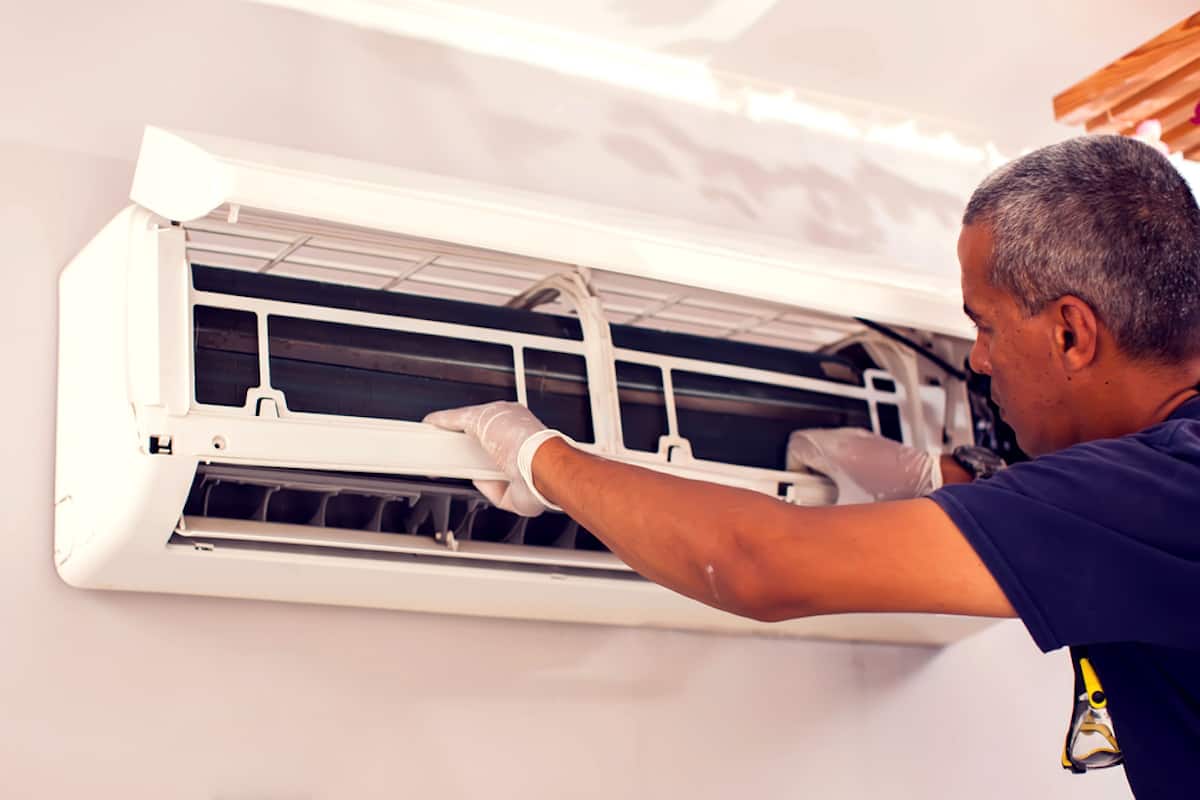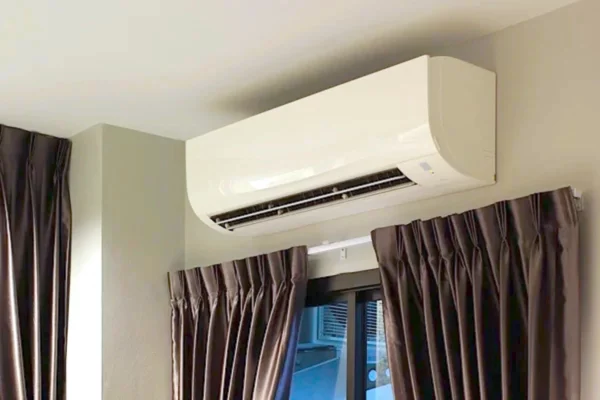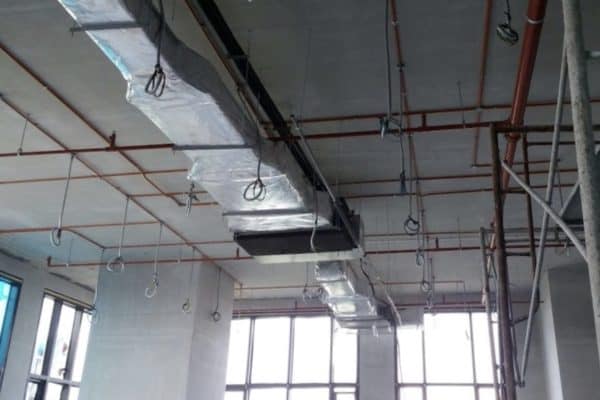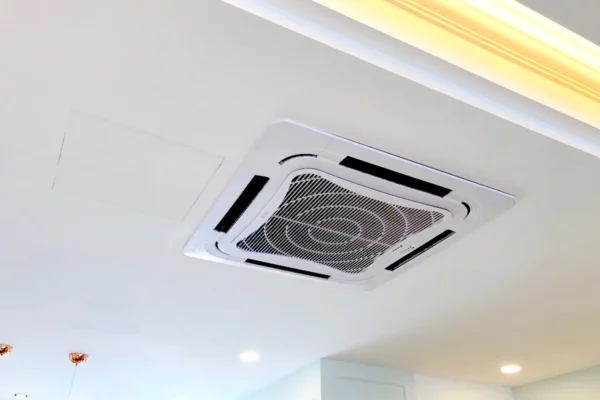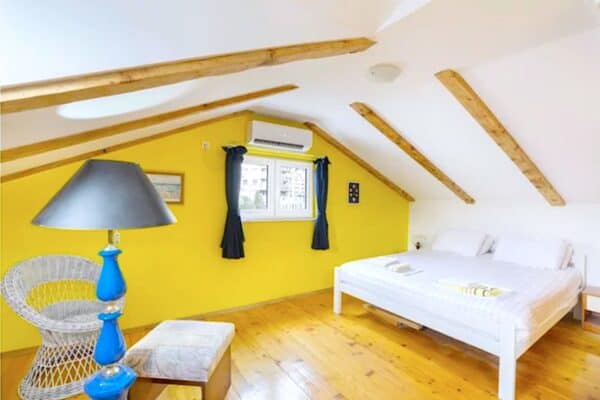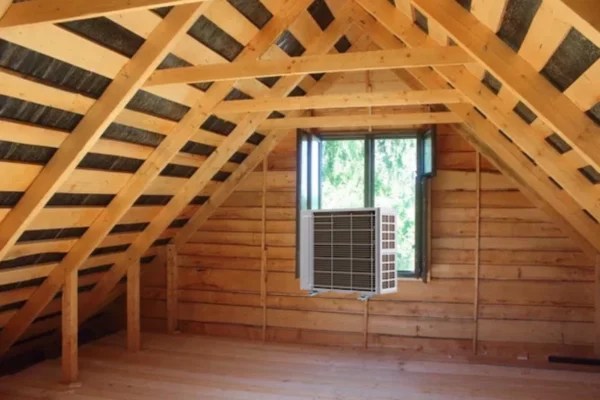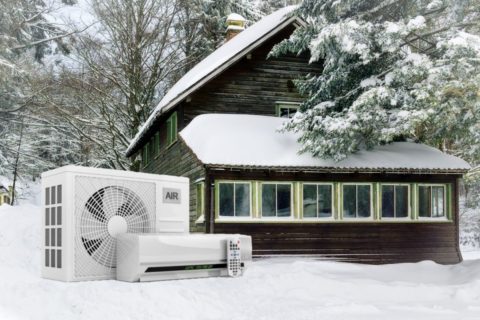5 Disadvantages of Mini Split Systems (with Solutions)
Mini splits are getting popular nowadays. Many people want to use a mini split system but they are also concerned about its disadvantages. So, what are the disadvantages of mini split systems?
In general, the disadvantages of mini split systems are:
- High Installation Cost
- Criticality of Placement
- Limited Air Quality Control
- Aesthetic Concerns
- Small Capacity
Mini split systems are very efficient and operate quietly. Hence, realizing the disadvantages of mini splits systems can help us steer away from costly mistakes.
Mini Split Installation Cost is High
One of the most complained about issues with mini split systems is high installation cost. As a general rule, the installation cost of a mini split is equivalent to the purchase cost of the mini split itself or more.
For instance, a $1500 mini split will cost you about $1500 to install by a professional depending on the location.
However, many people are choosing to install their mini split systems by themselves nowadays. In addition, mini split suppliers like MrCool are introducing DIY models like the MrCool DIY 3rd Gen on Amazon to ease the installation process.
Hence, high installation cost may not be even considered by DIY-ers as a disadvantage of mini split systems.
Take a look at the below mini split DIY installation video by MrCool and see if it is something that you can do by yourself:
Nonetheless, not everybody wants to install a mini split system by themselves. Hence, high installation cost is still one of the major disadvantages of mini split systems now.
On the bright side, I believe the installation cost of mini split systems will drop in the future as more and more HVAC contractors have the skills and experience to install mini split systems quickly and efficiently.
In Malaysia where I live, almost all homes and residential buildings are equipped with mini split systems. As a result, the installation cost of a mini split system is only about 15% of the purchase cost. Of course, labor cost is a major factor but it is something worth considering.
On the other hand, some people believe that a central air system is cheaper to install than a mini split system. However, it is more likely to be true only when the cost of the ductwork that is required by the central air system is excluded.
Mini split systems by default are ductless air conditioning systems. So, if you choose to use a ducted mini split system, then the installation cost may be more than a central air system.
Placement of Mini Split Head is Critical
The location of the central air handler is not as critical as the placement of the mini split head unit. Most of the time, the location of the central air handler is already been designed and fixed.
Hence, you just need to put the air handler either in the attic or in the basement and connect it to the ductwork that comes with the house.
Conversely, houses that are designed for a central air system don’t have a fixed location for the mini split head unit. On top of that, the mini split head unit must be installed at specific locations in order for the system to perform at the most optimal level.
In addition, apartments often don’t have a dedicated space for the mini split outside unit.
Hence, many people find it very challenging to decide where to put the mini split system.
Generally, the mini split head unit should not blow air directly onto the body of a person sitting or sleeping. Besides, it should be installed at around 7-8 feet above the ground with 8″ of clearance from the ceiling/slab above.
If you’re not sure where to put your mini splits, check out my post Best Place to Put the Mini Split Air Handler and Condenser.
Once you learn the fundamentals behind mini split placement, it is not hard to decide where to put them in your house. In fact, there are many YouTube videos of mini split DIY-ers showing how they put their mini splits in their house.
Air Quality is Limited with Mini Split
Mini split systems, especially ductless systems generally don’t have high performance filters. Most of the time, mini split filters are meant to capture dust to prevent the cooling coil from choking up.
On the other hand, central air handlers usually have a better filter. When needed, they can even use a HEPA filter to improve indoor air quality.
Meanwhile, ductless mini split systems are incapable of using high performance filters for better air quality. They have a fixed type of filter that can’t change or upgrade to other forms.
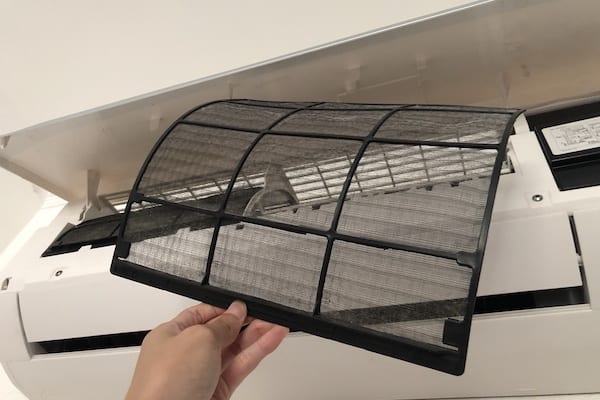
However, if you choose to use a ducted mini split system, you’ll have the option to use a better air filter.
In addition, premium mini split systems like the Panasonic ClimaPure XE have better air filters and air purification technology that can improve indoor air quality.
Aesthetic is a Concern for Mini Split
Many houses are not built for a mini split system but a central air system. Hence, mini split components such as refrigerant lines, drain lines and wires are not concealed.
So, replacing a central air system with a mini split system will result in having the mini split lines running exposed on the surface of the wall both inside and outside the house.
Many people use a refrigerant line set cover kit to cover the mini split refrigerant lines and wires but the result is still not appealing.
Conversely, if a house is built for a mini split system, the mini split lines can be concealed in walls and floors which is what has been practiced for decades in countries like Malaysia and Singapore.
Nonetheless, it is still possible to conceal the mini split lines in walls even if it is an existing house. For that, see my post Can You Run Mini Split Refrigerant Lines in Walls?.
Some people don’t like the look of the mini split head unit. Hence, they can choose to use the ceiling cassette type or the ducted type to maintain their house interior aesthetics.
Capacity of Mini Split is Small
A typical 1800 sqft single-family house may use a 3-ton central air system for cooling. For the same house, it often translates to 4-5 units of mini splits.
Most of the time, a ductless mini split starts at a cooling capacity of around 9000 BTU. The biggest model often has a cooling capacity of around 24000 BTU.
An 1800 sqft house usually has 3 bedrooms with each bedroom having a floor area of around 150 sqft.
On average, the cooling capacity needed for a 150 sqft room is about 4000-5000 BTU which translates to one mini split per bedroom. Under normal circumstances, the living room and the dining room each also need a mini split unit.
A typical 9000 BTU mini split can operate at a cooling capacity anywhere between 4000 BTU and 10000 BTU thanks to its variable speed compressor.
So, for an 1800 sqft house, 5 mini splits are already needed.
If you have a bigger house with more rooms, more mini splits are needed. So, the more rooms you have, the more mini splits you’ll need unless you choose a ducted type where you can split it between two to three rooms.
Needless to say, more mini splits mean more expensive to buy, install and maintain.
Therefore, mini split systems are not suitable for large buildings.
However, you can choose to use a multi-zone mini split system as opposed to the conventional single-zone mini split system.
A multi-zone mini split system allows you to have multiple inside units connecting to a single outside unit. Hence, the cost is reduced and the house looks better from the outside.
Final Thought
No matter it is a central air system or a mini split system, they both have pros and cons. Although mini split systems have quite a few disadvantages, they offer superior efficiency and quietness. In addition, the disadvantages that I’ve listed above are possible to mitigate.
Hence, mini split systems are still worth considering despite their cons as they consume lesser electricity which helps the world move towards a better future.
Lastly, consider my Mini Split (eBook) if you want to know how can you use Mini Split in your house. If you still have doubt or not feeling confident enough, feel free to consult me.
Consultation Service
Ask me for HVAC advice such as brand selection, best model, benefits, features, placement, duct size, grille size, how to design, design check, verification and other HVAC related queries.
If you have anything to add (or ask) about this topic, leave a comment down below!


